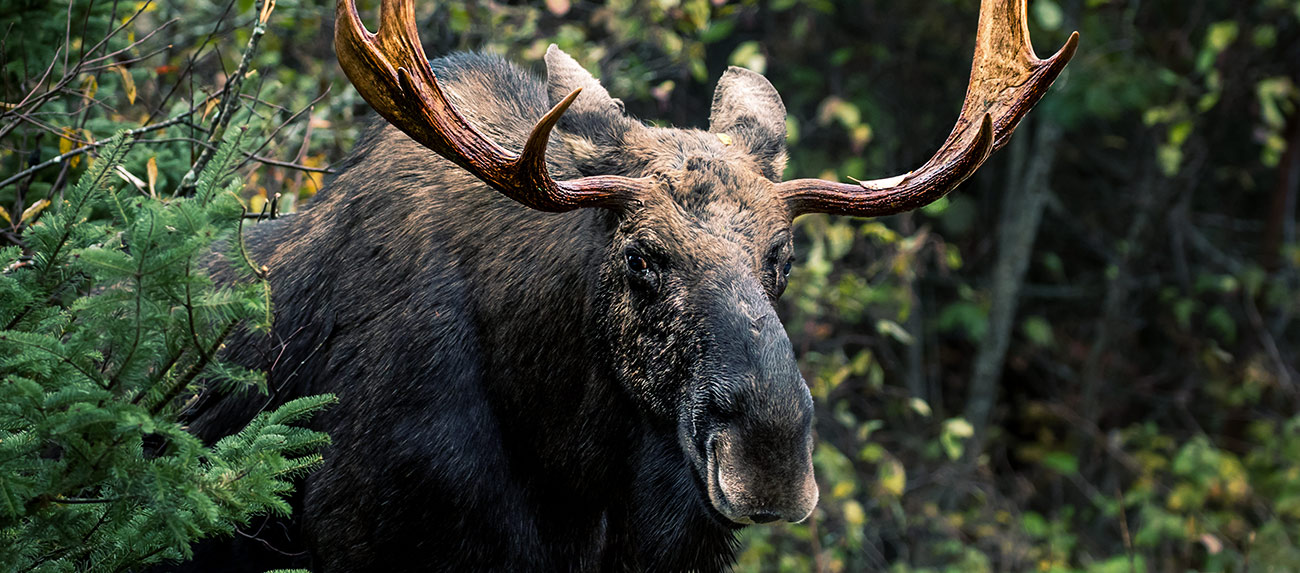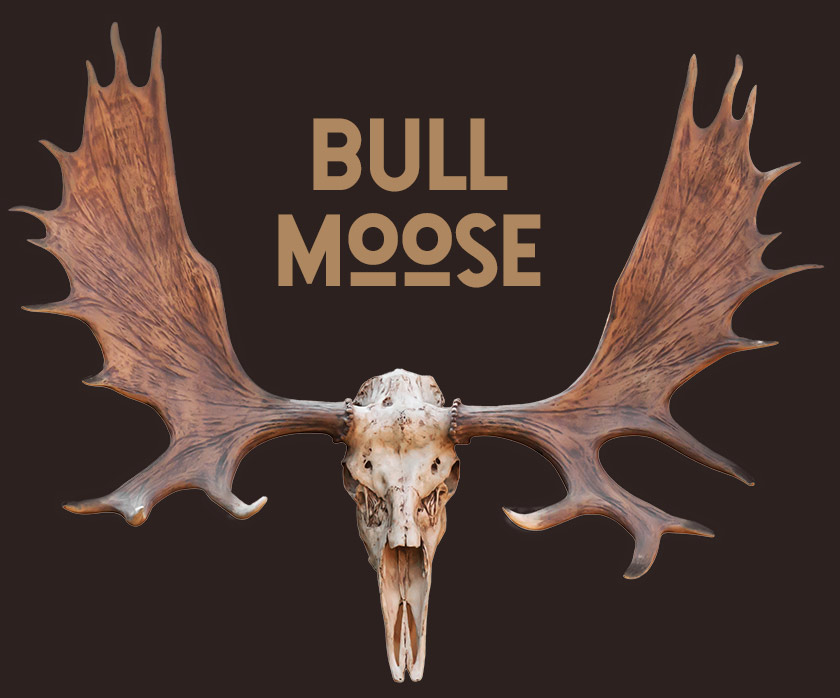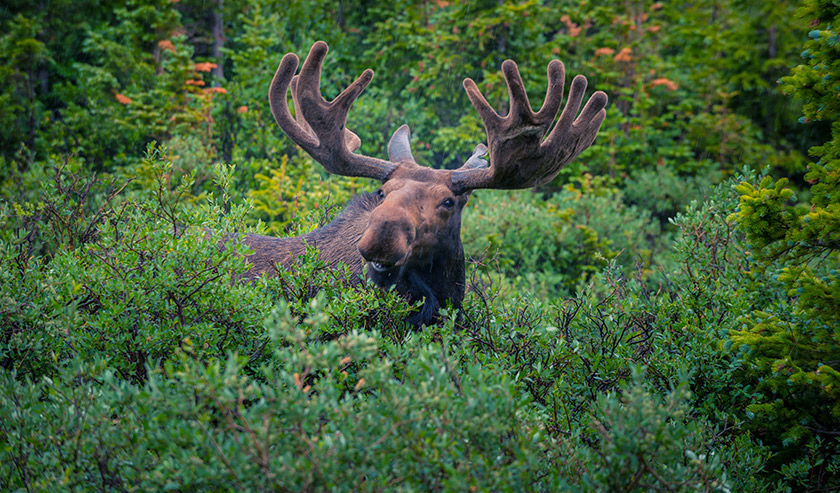How to Avoid and Survive a Moose Attack


Let me start by reminding you that a moose is not a predator. We don’t have rogue moose that are out to get you. But, believe it or not, there are way more injuries every year from moose than bears and wolves combined.

Moose Basics
The moose is the largest deer species in the world. The heaviest moose ever recorded weighed 1,800 pounds and stood 7 feet tall at the shoulders. Add to that the head and antlers and it can tower 10 feet tall. Imagine startling that massive creature in a willow thicket – I should know, it’s scary. In fact, startling a giant bull moose in a willow thicket was my first introduction to moose in Alaska.

I was going for a hike with my buddy in this dense bushy wetland. We couldn’t see anything as the willow shrubs were well over our heads. Then, unexpectedly, we heard what sounded to me like a truck plowing through the grass. All I saw was a glimpse of a giant brown mass. We both moved out of the way to barely miss getting run over as it crossed our path. Did we do the right thing or did we just get lucky?
To understand moose, you have to understand its place in the ecosystem. It’s big, but it has predators. It’s a prey species like a deer, a squirrel or a cow. That means they’re timid by nature and spook easily. Yet, because of their size, they have a tremendous ability to protect themselves.
If moose are aggressive toward humans, it is usually when they feel threatened. If a moose wanders into your backyard, it could be startled by a barking dog running toward it. Instinctually, the moose may treat the dog and any humans nearby just like a threat that would occur in the wild. It may react to you and your dog the same way they may react to a wolf attack – the moose will turn to defend itself. Often this means a swift attack to ward off the supposed predator. It’ll lower it’s head and charge. Often the kicking of the feet is what hits you first.
During the fall mating season in late September to October, bull moose can be particularly aggressive to humans. This is partly because their natural aggression is bolstered because of an increase in testosterone. Testosterone is an anabolic steroid so when animals are supped up on this stuff, think along the lines of a bodybuilder with roid rage.
In the spring, cow moose with calves can be aggressive as they attempt to protect their young from anyone who comes too close. It’s a motherly instinct that all mammal mothers have. In moose, it’s certainly amplified because they’re big!
Scenarios to Avoid with Moose
- Don’t approach a moose closely.
- Don’t walk between a mom and her babies.
- Don’t walk near a bull moose in the fall mating season.
- Don’t feed a moose. This increases the chances it will charge people – including children. Feeding animals also habituates them, which increases their chance of becoming a “problem animal” that will be killed for human safety.
Learn the Signs of a Likely Moose Attack:
Learning the signs of a likely attack are key to quickly getting to safety. The following behaviors usually accompany attacks:
- A moose will have its back hair raised.
- It will pin its ears back.
- They’ll lick their snout or smack their lips and teeth.
- They’ll show the whites in their eyes.
- The moose will lower its head and walk to you.
The Most Dangerous Moose
The most dangerous moose is the one you hit in your car on the highway. In fact, a crash with a moose in a car is 13 times more likely to end in your death than if you hit a deer. In Alaska alone there are over 800 accidents with moose a year.
How to Survive a Moose Attack?
- Don’t fight back – you won’t win and it’ll just keep fighting you.
- Keep dogs away from moose.
- Back away or run! You can’t fully outrun a moose, so you need to find cover quickly.
- Try to get behind a tree, a vehicle or some other solid object.
- If it knocks you down, curl up into a ball and play dead. This position will help protect your head and organs.
- Don’t get up until it has left the area or it may attack again. Remember, it’s not trying to eat you, just neutralize the threat.
Prefer Listening?
If you’d rather listen to this article, I’ve recorded it here to make it as accessible as possible.

